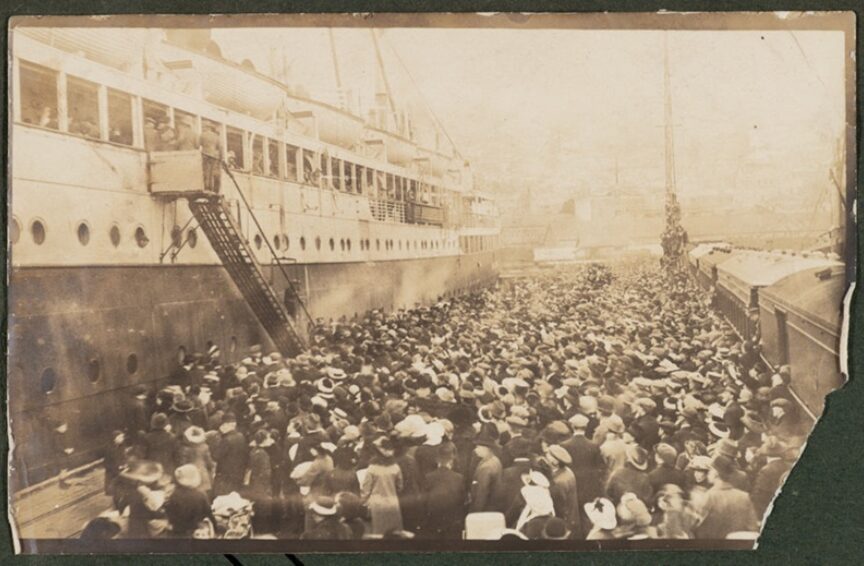PO Box 95
Lyttelton 8841
Te Ūaka recognises Te Hapū o Ngāti Wheke as Mana Whenua and Mana Moana for Te Whakaraupō / Lyttelton Harbour.
“From the Uttermost Ends of the Earth”
Te Ūaka The Lyttelton Museum’s online collection contains many images of the departure from and return to Ōhinehou/Lyttelton of troopships; to the South African war of 1899 - 1902 and both World War I and World War II.
Many of the troopships for World War I departed from Wellington as it was in close proximity to the primary training camps at Featherston and Trentham. Nevertheless, Lyttelton saw its fair share of farewells for Kiwi soldiers and their families, especially those from the Canterbury contingents. The first of these was the departure of the Tahiti and Athenic in September 1914.
Troopships were often requisitioned from commercial shipping lines and duly refitted and repainted a uniform Admiralty grey. With the men also clad in their sombre khaki uniforms, the ships were literally ‘packed to the gunwales’ with both men and supplies.
In the patriotic climate of the first World War, these departures must have held a complex mixture of emotions for ordinary people; pride in their husbands, sons, fathers, brothers, uncles and friends, mixed with trepidation for what their futures held and for their safe return.
Some departure activities seem strange in hindsight; however, in the context of the times, when tobacco was issued with rations and was believed to have medicinal and morale boosting effects, the following does not seem so strange - “To farewell the Canterbury contingent, Christchurch held a 'monster smoking concert' at the King Edward Barracks on the evening of September 5” – stuff.co.nz, Apr 22 2015.
Around the start of World War II in 1940, Lyttelton again witnessed the departure of troopships to battlefields overseas, including the Dunera, Sobieski, Andes and Orcades, although later most NZEF (New Zealand Expeditionary Force) ships left from Wellington. The port also received many returning hospital ships, notably the Maunganui which visited Lyttelton on nine occasions over the war years. Crowds of people lined the wharfs to welcome these vessels with their precious cargo of wounded men.
These grainy images of departures and arrivals, serve as poignant reminders of the trials and sacrifices of the war generations.

